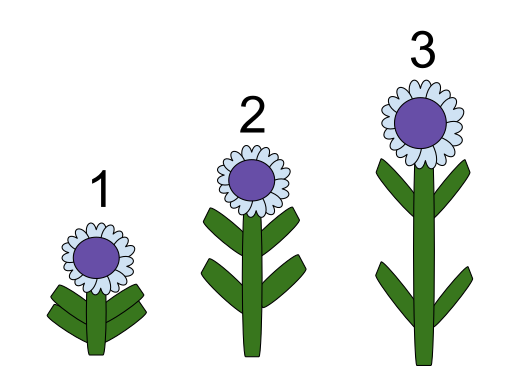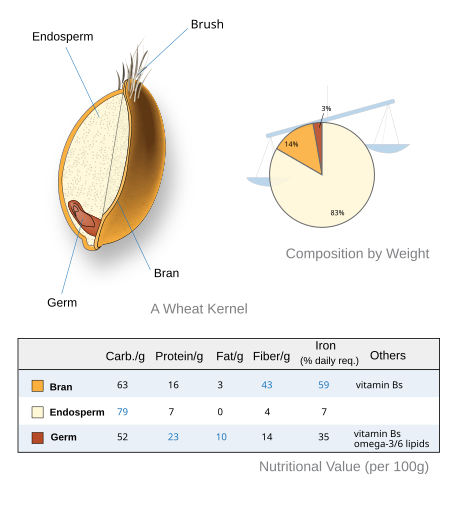OCR Specification focus:
‘Evaluate evidence for gibberellin’s role in stem elongation and seed germination, including concentration effects on stem growth.’
Gibberellins are essential plant growth hormones influencing both stem elongation and seed germination. Their discovery revolutionised understanding of plant development, linking hormone concentration to cell expansion and enzyme activation.
The Discovery and Nature of Gibberellins
Gibberellins were first identified in Gibberella fujikuroi, a fungal pathogen causing “foolish seedling disease” in rice, where plants exhibited abnormal elongation. This observation led to the isolation of gibberellic acid (GA₃), one of many gibberellins now known to regulate plant growth.
Gibberellins are terpenoid compounds synthesised from acetyl-CoA via the mevalonate pathway in plant plastids and endoplasmic reticulum. Over 100 gibberellins have been discovered, though only a few are biologically active.
Gibberellins and Stem Elongation
Mechanism of Action
Stem elongation depends on cell division and cell elongation within the internodes (stem regions between leaves). Gibberellins stimulate these processes through several coordinated actions:
Increasing cell wall extensibility, enabling cells to expand.
Stimulating mitotic activity in the intercalary meristems of the stem.
Promoting synthesis of enzymes involved in loosening the cell wall.
Enhancing uptake of water and nutrients by growing cells.
Internode: The region of a plant stem between the points where leaves or branches emerge.
Hormonal Interactions
Stem elongation is not caused by gibberellins alone but results from synergistic interactions between gibberellins and other plant hormones, particularly auxins. Auxins promote gibberellin synthesis, while gibberellins enhance auxin transport, forming a positive feedback loop that sustains elongation.
Concentration Effects on Growth
The degree of stem elongation is proportional to gibberellin concentration within certain limits:
Low concentrations stimulate moderate elongation.
Optimal concentrations cause rapid growth and taller plants.
Excessive concentrations may lead to structural weakness or abnormal elongation.
Experimental studies using dwarf pea and maize mutants demonstrate that plants deficient in gibberellin synthesis exhibit stunted growth, which can be reversed by exogenous gibberellin application. These experiments provide strong evidence for gibberellin’s central role in stem elongation.
Exogenous: Originating from outside the organism; applied externally rather than produced internally.
Increasing gibberellin concentration promotes internode elongation by enhancing cell expansion and division in stem tissues.

Diagram illustrating stem elongation as gibberellin levels increase: dwarf (very low GA), average height (moderate GA), and greatly elongated (high GA). The visual emphasises that internode length scales with gibberellin activity. Layout is intentionally simple to highlight the concentration–response relationship. Source.
Gibberellin Biosynthesis and Regulation
Gibberellin biosynthesis begins in the plastids, continues in the endoplasmic reticulum, and completes in the cytosol. The pathway involves several oxidation and cyclisation steps, forming bioactive gibberellins such as GA₁ and GA₃.
Control of gibberellin levels occurs through:
Transcriptional regulation of biosynthetic enzymes.
Deactivation mechanisms converting active forms into inactive metabolites.
Environmental cues, such as light and temperature, influencing production.
These regulatory processes ensure gibberellin activity matches developmental needs and external conditions.
Role of Gibberellins in Seed Germination
Breaking Dormancy
Many seeds remain dormant until environmental conditions are favourable. Gibberellins play a crucial role in breaking dormancy by triggering metabolic activation of the embryo.
When a seed imbibes water, gibberellins are synthesised in the embryo and diffuse to the aleurone layer of the seed. This initiates transcription of genes coding for hydrolytic enzymes.
Enzyme Activation and Nutrient Mobilisation
In the aleurone layer of cereal grains, gibberellins stimulate the production of α-amylase and proteases. These enzymes digest stored starch and proteins in the endosperm, releasing maltose and amino acids that nourish the developing embryo.
Gibberellin signal transduction involves activation of specific receptors and transcription factors that promote gene expression.
The resulting enzymes catalyse the conversion of starch → maltose → glucose, supplying energy for germination.
Aleurone layer: The outer layer of the endosperm in cereal seeds that secretes enzymes to digest stored food during germination.
During germination in cereals, gibberellin from the embryo diffuses to surrounding tissues, triggering α-amylase release to mobilise endosperm starch for the growing embryo.

Longitudinal diagram of a cereal grain highlighting germ (embryo) and starchy endosperm, which are the tissues linked by gibberellin-mediated signalling in germination. Use it to orient the source of GA (embryo) and the substrate (endosperm starch). Note: the image also shows nutritional breakdown of layers; those values are ancillary to the syllabus focus. Source.
Evidence from Experiments
Experimental studies support gibberellin’s role in germination:
Seeds treated with gibberellin inhibitors fail to germinate unless gibberellin is reintroduced.
Isolated aleurone layers respond to applied gibberellins by synthesising α-amylase even without an embryo.
Genetic mutants lacking gibberellin biosynthetic genes (e.g. ga1 in Arabidopsis) cannot germinate until treated with exogenous GA.
These findings confirm that gibberellin acts as the primary hormonal trigger for enzymatic activation and germination.
Interactions with Abscisic Acid (ABA)
Seed germination is finely balanced by the antagonistic relationship between gibberellins and abscisic acid (ABA):
Gibberellins promote germination by stimulating enzyme production.
ABA maintains dormancy by inhibiting these processes.
The GA : ABA ratio determines whether a seed remains dormant or germinates.
Environmental cues such as light, temperature, and water availability influence this hormonal balance, ensuring germination occurs at an optimal time.
Applications and Experimental Evidence
Agricultural and Horticultural Uses
Gibberellins have been exploited commercially to control plant height and yield:
Dwarf varieties of crops are treated with gibberellins to increase height and improve mechanical harvesting.
Seedless grapes and other fruits are sprayed with GA to promote cell elongation and fruit expansion.
Malting in brewing relies on gibberellin-induced enzyme production to convert starches into fermentable sugars.
Experimental Evaluation of Evidence
Key experimental approaches for evaluating gibberellin function include:
Mutant analysis – comparing wild-type and gibberellin-deficient plants.
Hormone assays – quantifying endogenous gibberellin levels during development.
Bioassays – measuring elongation response to applied GA at various concentrations.
Molecular techniques – identifying genes upregulated by gibberellin exposure.
These investigations collectively demonstrate that gibberellins act as crucial regulators of plant growth and development, their effects being dose-dependent and context-specific.
Summary of Key Roles
Promote stem elongation through cell division and expansion.
Stimulate enzyme synthesis during seed germination.
Interact with other hormones such as auxins and ABA to balance growth and dormancy.
Influence gene expression and metabolic activation in developing tissues.
Show concentration-dependent effects on stem growth and seedling development.
FAQ
Light can regulate gibberellin synthesis and activity, especially in light-sensitive seeds such as lettuce and Arabidopsis.
In some species, red light activates phytochrome receptors, which stimulate gibberellin biosynthesis in the embryo. This increase in gibberellin levels promotes enzyme production in the aleurone layer, triggering germination.
Conversely, far-red light reverses this effect by inhibiting gibberellin synthesis, maintaining dormancy. Thus, light acts as an environmental cue ensuring germination occurs in favourable conditions.
Gibberellin production is affected by several environmental conditions that signal growth opportunities.
Key influences include:
Temperature: Low temperatures (vernalisation) can stimulate gibberellin synthesis in some species, promoting flowering and stem growth.
Light intensity and duration: Longer daylight periods often enhance gibberellin biosynthesis.
Water availability: Adequate water promotes GA activity during germination; drought reduces its synthesis.
These factors integrate environmental signals with hormonal control of growth.
Dwarf varieties, such as Mendel’s pea mutants, have genetic defects in gibberellin synthesis or response pathways.
When treated with exogenous gibberellin, these plants grow to normal height, confirming gibberellins’ essential role in elongation.
However, if a plant fails to respond even after gibberellin application, it indicates a mutation in the gibberellin receptor or signalling pathway, not just a lack of hormone production.
This distinction between synthesis and response helps researchers identify different genetic stages of hormone regulation.
Gibberellins bind to GID1 receptors in the aleurone cells, forming a complex that triggers the destruction of DELLA proteins, which normally inhibit transcription.
Once DELLA proteins are removed, transcription factors activate genes coding for enzymes such as α-amylase and proteases.
This cascade ensures the rapid conversion of stored starch and proteins into soluble nutrients for the growing embryo.
Yes, gibberellins are used in horticulture and food production industries to manipulate growth and timing.
Examples include:
Delaying fruit senescence to extend shelf life of citrus fruits.
Breaking bud dormancy in ornamental plants for off-season flowering.
Increasing sugarcane yield by enhancing stem elongation and sugar content.
These applications exploit gibberellins’ natural roles in promoting elongation and developmental transitions, making them valuable in controlled growth environments.
Practice Questions
Question 1 (2 marks)
Explain how gibberellins stimulate stem elongation in plants.
Mark Scheme:
1 mark for stating that gibberellins promote cell elongation and cell division in stem tissues.
1 mark for explaining that they achieve this by increasing cell wall extensibility or stimulating enzyme production that loosens the cell wall (e.g. by activating enzymes involved in cell wall modification).
Question 2 (5 marks)
Describe and explain the role of gibberellins in the germination of cereal seeds.
Mark Scheme:
1 mark for stating that gibberellins are synthesised in the embryo once the seed has imbibed water.
1 mark for stating that gibberellins diffuse to the aleurone layer of the seed.
1 mark for explaining that gibberellins stimulate gene transcription in aleurone cells for the production of hydrolytic enzymes such as α-amylase.
1 mark for stating that α-amylase hydrolyses starch stored in the endosperm into maltose or glucose.
1 mark for explaining that the released sugars provide energy for the growth and development of the embryo during germination.

